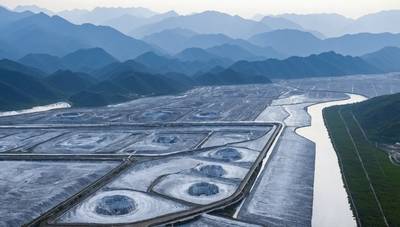China's thermal energy generation fell 2.3% on an annual basis in April
Official data released on Monday showed that thermal power generation in China fueled primarily by coal fell by 2.3% in April. It also dropped 4.1% between January and April. This is in line with the expectation that China's fossil fuelled power production could drop in 2025, for the first dip in 10 years.
The National Bureau of Statistics reported that China generated 449.1 billion Kilowatt-hours last month, and 1.98 trillion in total for the year.
Natural gas is also used in a few power plants, which contributes a small amount to the thermal energy generation.
The total power generation in April was 0.9% higher than in March, at 711.1 billionkWh. This is a slower increase than the 1.8% recorded in March. Power generation in the first four month increased by 0.1%, to 2.98 trillionkWh. This was due to unseasonably mild weather that led people not to use heating as much during the first two months.
In addition, the NBS figures understate total production because they exclude some small-scale generators. This is in accordance with survey requirements that only include industrial firms that generate at least 20 millions yuan ($2.8million) annually from their main operations.
The energy regulator's figures show the discrepancy. For example, National Energy Administration reports that power consumption increased by 4.8% in march while NBS data shows a 1.8% increase in output.
Analysts say that power output and consumption grow at similar rates, although there can be differences due to transmission losses and other factors.
The China Electricity Council, an industry body, said last month in its latest report that it expected power consumption to increase by 6% annually in 2025. This is close to the 6.8% annual growth rate of 2024. However, the forecasts did not take into account the global trade environment, which has deteriorated.
According to the state media, hydropower in China, its second largest power source, fell 6.5%, to 78.6 GWh, in April. This is because parts of Sichuan, Yunnan, and other provinces where China's vast hydropower capacity lies, are experiencing drought. Hydropower production rose by 2.2% in the first four month of this year.
(source: Reuters)
